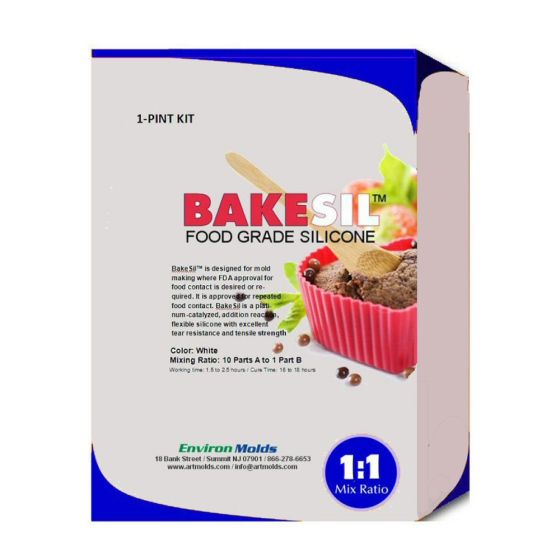What Makes Silicone So Exceptional?
Heat Tolerance
Silicone possesses impressive thermal stability, retaining its properties in temperatures ranging from -100° to upwards of 500°F. You can safely use silicone molds for casting wax or tempering delicate chocolates. Some specialized products designed for metalsmithing can even withstand molten metals exceeding 1200°F.
Flexibility
A hallmark of silicone is its bendability and elasticity. Complex mold geometries and deep undercut areas that crack rigid molds can flex and deform to release casts freely. This flexibility prevents damage during extraction, enabling multiple re-uses.
Durability
While silicone rubbers exhibit great flexibility, they are not easily torn or made to lose shape. Quality silicone holds up to years of regular casting use if properly maintained. Whether subjected to moisture, UV light, or humidity, silicone retains dimensional stability better than most alternatives.
Intricate Detail Resolution
Molten silicone easily picks up even the most subtle textures and details with accuracy and precision. Things like delicate feathers, lace patterns, or typography imprint clearly for high-fidelity reproduction. This aids creators in capturing realism.
Key Applications Leveraging Silicone’s Properties
Chocolate Making
Safe for food contact, resistant to high heat, and flexible enough to remove fragile tempered chocolate castings without breakage. Silicone offers chocolate makers the ideal material for yielding flawlessly detailed bonbons, pralines, or candy bars through intricate molds.
Candle Making
Candle makers harness silicone molds to impart striking embossed geometries, textures, and custom patterns into wax. Exceptional thermal properties allow molten wax to cure fully before flexible demolding. The results are wax creations with crisp details.
Resin Casting
The clarity of crystal-clear epoxy and polyurethane resins lets subtle mold details shine through vibrantly. Silicone picks up and replicates even the most minute textures and patterns without loss of accuracy. Resin artisans use this capability to encapsulate items inside hand-poured tabletop pieces with stunning realism.
Soap Making
It stands up to alkaline soaps without issue, unlike some mold alternatives which can react. Flexible soap molds yield intricately shaped bars, embossed designs, and custom textures while minimizing surface curing issues that can inhibit release. The bendability also prevents fragile soap castings from cracking or tearing during unmolding.
Concrete Casting
Recreating stone-like qualities in concrete relies on molds with excellent detail resolution to impart realism. While concrete cures, silicone’s flexibility enables unfolding of complex mold geometry and undercuts. The result: textured and imprinted concrete products that mimic Mediterranean tiles, rough-hewn plank wood, or fossil patterns.
Pushing Creative Boundaries
Jewelry makers leverage silicone’s heat resistance for lost-wax casting of silver and gold pieces. Special effects studios take advantage of flawless detail replication to produce masks, makeup prosthetics, and animatronics resembling skin. Chocolatiers transform cacao into delectable works of art through whimsical silicone molds.
Indeed, pushing creative limits seems to be silicone’s specialty. The material aids makers throughout every step of the process with properties uniquely fit for purpose.
Choosing the Best Silicone Products
With so many inferior silicone products flooding the market, finding quality can prove difficult. For mold making and casting, platinum-cure silicones represent the gold standard. Compared to tin-cured versions, platinum stands up better to repeated use without inhibiting finishes. These specialized rubbers also pick up finer details than cheaper alternatives.
For elevated mold-making and casting essentials, ArtMolds offers an unrivaled selection of platinum silicone products purpose-built for artisans. Peruse our vast catalog of chocolate molds, resin tools, candle supplies, soap molds and more to take your next project to the next level.
Discover the Art of Silicone Casting
We invite you to explore first-hand how our premium silicone tools unlock new potential for makers of all skill levels. Let your imagination run wild and breathe life into your most ambitious creative visions with ArtMolds by your side. Discover our complete range of innovative silicone solutions by visiting https://www.artmolds.com today.


















